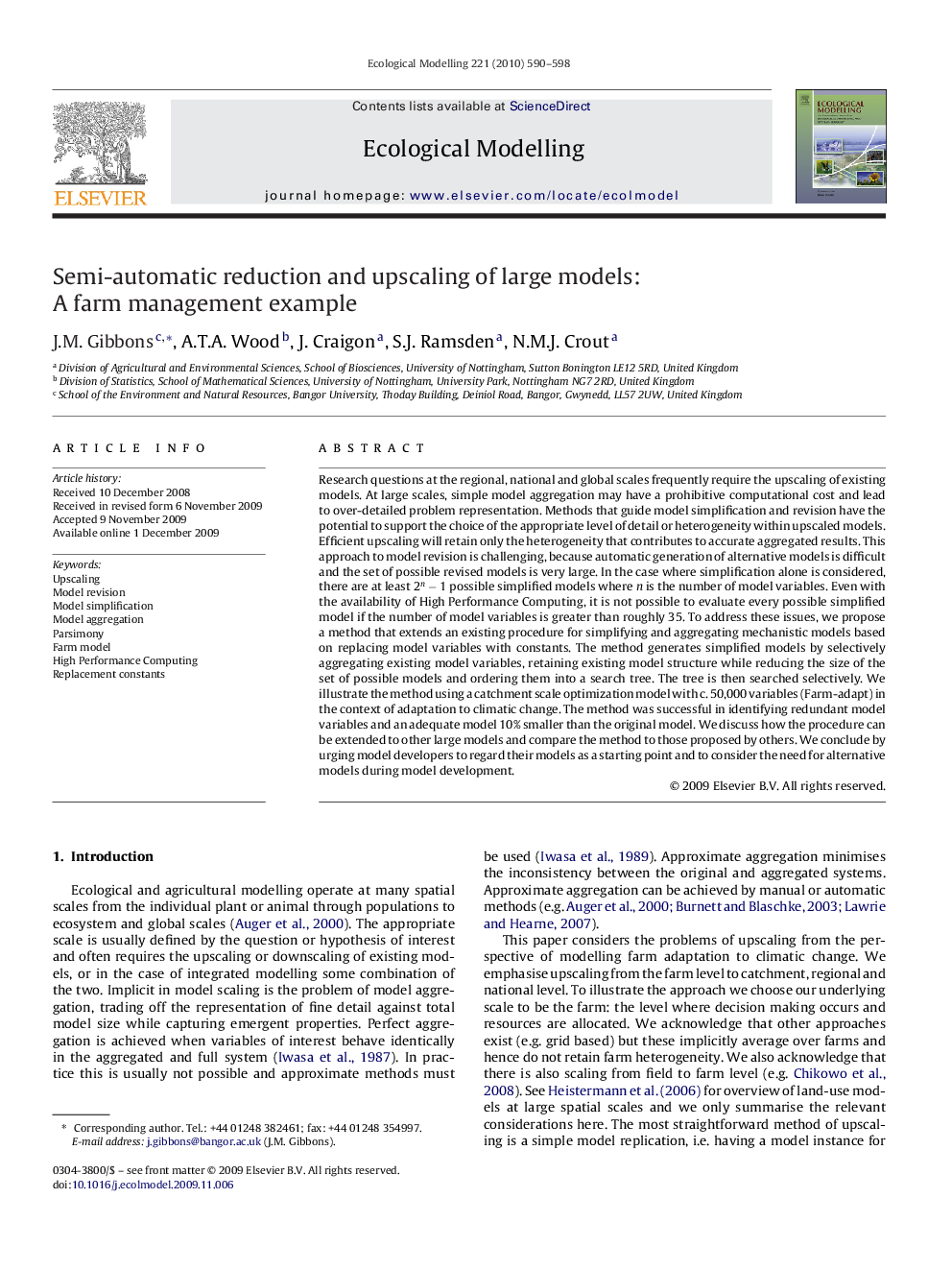| کد مقاله | کد نشریه | سال انتشار | مقاله انگلیسی | نسخه تمام متن |
|---|---|---|---|---|
| 4377088 | 1303408 | 2010 | 9 صفحه PDF | دانلود رایگان |

Research questions at the regional, national and global scales frequently require the upscaling of existing models. At large scales, simple model aggregation may have a prohibitive computational cost and lead to over-detailed problem representation. Methods that guide model simplification and revision have the potential to support the choice of the appropriate level of detail or heterogeneity within upscaled models. Efficient upscaling will retain only the heterogeneity that contributes to accurate aggregated results. This approach to model revision is challenging, because automatic generation of alternative models is difficult and the set of possible revised models is very large. In the case where simplification alone is considered, there are at least n2−12n−1 possible simplified models where n is the number of model variables. Even with the availability of High Performance Computing, it is not possible to evaluate every possible simplified model if the number of model variables is greater than roughly 35. To address these issues, we propose a method that extends an existing procedure for simplifying and aggregating mechanistic models based on replacing model variables with constants. The method generates simplified models by selectively aggregating existing model variables, retaining existing model structure while reducing the size of the set of possible models and ordering them into a search tree. The tree is then searched selectively. We illustrate the method using a catchment scale optimization model with c. 50,000 variables (Farm-adapt) in the context of adaptation to climatic change. The method was successful in identifying redundant model variables and an adequate model 10% smaller than the original model. We discuss how the procedure can be extended to other large models and compare the method to those proposed by others. We conclude by urging model developers to regard their models as a starting point and to consider the need for alternative models during model development.
Journal: Ecological Modelling - Volume 221, Issue 4, 24 February 2010, Pages 590–598